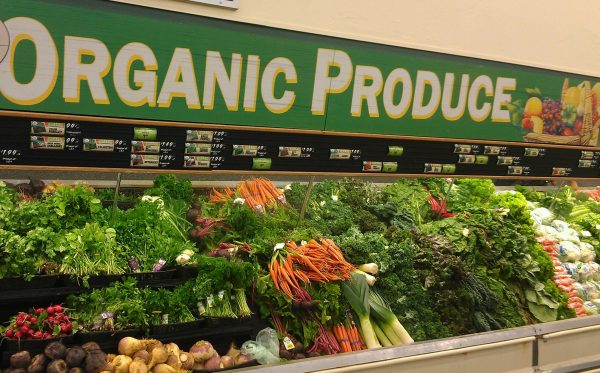 Trends and general conditions
Trends and general conditions
The market research company Organic Monitor estimates the global market for organic food to have reached 81.6 billion US dollars in 2015 (approximately 75 billion euros). The United States is the leading market with 35.9 billion euros, followed by Germany (8.6 billion euros), France (5.5 billion euros), and China (4.7 billion euros). In 2015, most of the major markets showed double-digit growth rates The highest per capita spending was in Switzerland (262 Euros), and Denmark has the highest organic market share (8.4 percent of the total food market).
Germany is the largest organic market in Europe (8.6 billion euros), followed by France (5.5 billion euros), the UK (2.6 billion euros) and Italy (2.3 billion euros) (2015 data). The first figures available for 2016 show that the market continues to grow (Germany 2016: 9.5 billion euros). Globally, Germany is the second largest market after the U.S. (35.8 billion euros in 2015).
The trend of the market growing faster than organic farmland continued in 2015. However, it is encouraging that the area of organic farmland grew at a faster rate than it had in past years: it increased by almost one million hectares or by 8.2%. At the end of 2015, 12.7 million hectares were under organic management in Europe (in the European Union, 11.2 million hectares). This constitutes 2.5% 6.2% respectively of the total agricultural land. The countries with the largest organic farmland areas are Spain (1.97 million hectares), Italy (1.49 million hectares) and France (1.37 million hectares). In each of these three countries, the area of organic farmland increased by at least 100’000 hectares. Nine European countries report that at least 10 % of their farmland is organic and the highest organic shares worldwide are in Liechtenstein (30.2 %), Austria (21.3 %) and Sweden (16.9 %).
In Europe, there were almost 350‘000 organic producers (European Union: 270‘000), 60‘000 organic processors and almost 3’700 organic importers. While growth in the number of organic producers was at 3 % (European Union: 5 %) and therefore comparably modest, the number of organic processors and importers increased by 12 % and 19 %, respectively. (FIBL)
Share of some products in total retail value of sold organic foods at the most important
| No | Product | Austria | Belgium | Finland | France | Germany | Netherlands | Norway | Switzerland |
| 1 | Milk and dairy products | unknown | 2.1% | unknown | 3.2% | 8.6% | 4.8% | 1.8% | 11.0% |
| 2 | Fruit | 10.7% | 3.5% | 3.2%3 | 4.3% | 6.7% | 3.9%3 | 1.7%1 | 10.1% |
| 3 | Bread, flour and pastries | unknown | 1.7% | 1.2% | 2.5%2 | 7.1%(bread) | 3.2% | 1.0% | 4.6% |
| 4 | Eggs | 17.2% | 11.2% | 12% | 22.1% | 16.7% | 12.7% | 7.5% | 22.7% |
| 5 | Vegetables | 12.6% | 5.4% | 3.2%3 | 4.0% | 8.6% | 3.9%3 | 3.6% | 14.6% |
| 6 | Cheese | 8.5% | 8.5% | 0.9% | 1.2% | 3.6% | unknown | 0.5% | 6.0% |
| 7 | Milk | 15.7% | 3.0% | 3.2% | 10.8% | 8.1% | unknown | 4.0% | 18.9% |
| 8 | Meat and meat product | 3.5%4 | 2.1% | 0.6% | 1.60% | 2.1% | 2.8% | 0.3% | 4.8%5 |
| 9 | Beverages | unknown | 0.9%6 | 0.6% | 3.0%7 | 1.7% | unknown | 0.1% | 2.7% |
Compiled by: FiBL-AMI 2016; Sources: Austria (only general retailers): Roll AMA/AMA Marketing; Belgium (only general retailers): GFK Panel services Benelux; Finland: Pro Luomo, France: A Agence Bio; Germany: AMI based on GFK household panel data; Netherlands: Bio Monitor; Norway: Norwegian Agriculture Agency (only general retailers); Switzerland (only general retailers): Bio Suisse
1)Fruits, berry fruit and stone fruit, 2) flour, 3) fruit and vegetables, 4) only meat, 5) including fish, 6) fruit juices, wine and beer, 7) vegetable beverages, fruit and vegetable juices, wine and alcohol.
Note: Due to classifications and nomenclatures differing from country to country, it is not possible to supply data for all product groups, even if data for individual products may be available. Not all countries have data on the market shares of organic products.

